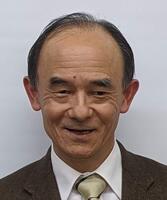Research Experience
-
2012.04-2013.03
Nagoya University
-
2011.02-
西安交通大学名誉教授
-
2010.09-
西安交通大学電気設備電気絶縁国家重点実験室国際学術委員会委員
-
2008.04-
Shibaura Institute of Technology
-
2006.05-2008.03
(独)科学技術振興機構 研究開発戦略センター シニアフェロー
-
2001-2005
理化学研究所共同研究員
-
1985-
Waseda University, Professor
-
1980-1985
Waseda University, Associate Professor
-
1982-1984
MIT Visiting Scientist of Electrical Engineering
-
1981-1983
MIT Visiting Scientist of Electrical Engineering
-
1978-1980
Waseda University, Assistant Professor
-
1976-1978
Waseda University, Research Assistant


Click to view the Scopus page. The data was downloaded from Scopus API in March 12, 2025, via http://api.elsevier.com and http://www.scopus.com .